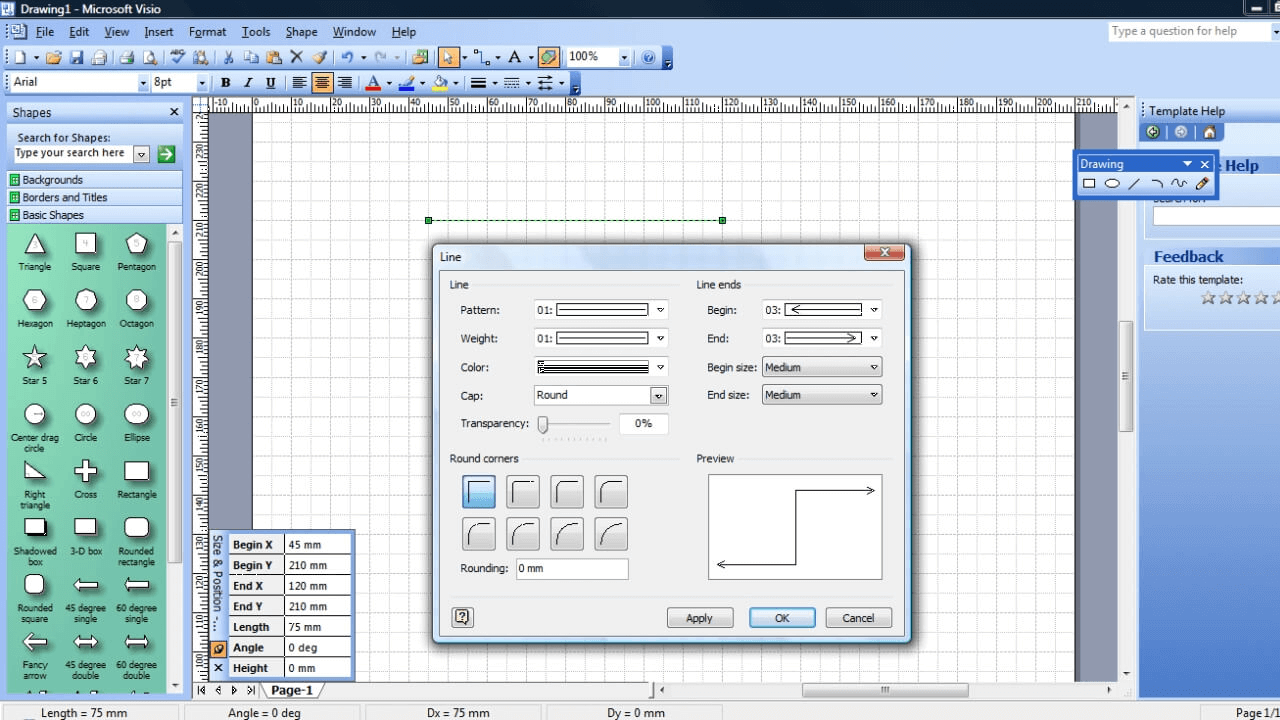

- OFFICE VISIO 2003 CIRCUIT SCHEMATIC HOW TO
- OFFICE VISIO 2003 CIRCUIT SCHEMATIC INSTALL
- OFFICE VISIO 2003 CIRCUIT SCHEMATIC CODE
- OFFICE VISIO 2003 CIRCUIT SCHEMATIC PROFESSIONAL
Microsoft Office Visio 2007 lets IT and business professionals.
OFFICE VISIO 2003 CIRCUIT SCHEMATIC PROFESSIONAL
Microsoft Office Visio Professional v.2007 Microsoft Office Visio Professional 2007 provides users advanced functionality, such as data connectivity and visualization features which are not included in Office Visio Standard 2007. Microsoft Office Visio 2007 Professional Add-In for Rack Server Virtualization (Virtual Rack) v.29278 Rack Server Virtualization Add-in provides the capability to pull the rack-server data either from an Excel spread sheet or from the user and render the Visio diagram. It enables developers to work with VSD, VDX & Visio 2013 VSDX files on ASP.NET web apps, web services & Windows application. Diagram is a class library for working with MS Visio files & is a pure. Open C:\Simpleflowchart.vsd in Visio to see the results. By default, the location is one of the following:įor Office Visio 2007, the default location is C:\Program Files\Microsoft Office\Visio12\1033\BASFLO_U.VSS.įor Visio 2003, the default location for this file is C:\Program Files\Microsoft Office\Visio11\1033\BASFLO_U.VSSįor Visio 2002, the default location for this file is C:\Program Files\Microsoft Visio\Visio10\1033\Solutions\Flowchart\Basic Flowchart Shapes (US units).vss. Note Modify the TEMPLATEPATH constant to point to your Visio installation folder. ' Delete the previous version of the file. VEndCell.GlueTo(vToShape.Cells("AlignTop")) VBeginCell.GlueTo(vFromShape.Cells("AlignBottom")) VConnectorMaster = vStencil.Masters("Dynamic Connector") VFlowChartMaster = vStencil.Masters(aryValues(iCount, 0)) VStencil = (TEMPLATEPATH, 4)įor iCount = LBound(aryValues) To UBound(aryValues) - 1 'Create a new document note the empty string. ' Start point measured from the bottom left corner. ' Change this constant to match your choice of location and file name.Ĭonst SAVENEWFILE = "C:\Simpleflowchart.vsd" & "Solutions\Flowchart\Basic Flowchart Shapes (US units).vss" Replace the contents of Module1 with the following: Module Module1ĪryValues(0, 1) = "Begin Routing Process"Ĭonst TEMPLATEPATH = "C:\Program Files\Microsoft Office\Visio10\1033\" _ With: Private Sub Button1_Click(ByVal sender As System.Object, ByVal e As OFFICE VISIO 2003 CIRCUIT SCHEMATIC CODE
In the code window, replace the following code Private Sub Button1_Click(ByVal sender As System.Object, _īyVal e As System.EventArgs) Handles Button1.Click The code window opens at the Click event for Button1. Add a button to Form1.ĭouble-click Button1. If you receive a prompt to generate wrappers for the libraries that you selected, click Yes.
OFFICE VISIO 2003 CIRCUIT SCHEMATIC INSTALL
Note If you have not already done so, Microsoft recommends that you download and install the Microsoft Office XP Primary Interop Assemblies (PIAs).Ĭlick OK in the Add References dialog box to accept your selections.
 For Visio 2002, click Microsoft Visio 2002 Type Library. For Visio 2003, click Microsoft Visio 11.0 Type Library. For Visio 2007, click Microsoft Visio 12.0 Type Library.
For Visio 2002, click Microsoft Visio 2002 Type Library. For Visio 2003, click Microsoft Visio 11.0 Type Library. For Visio 2007, click Microsoft Visio 12.0 Type Library.  On the COM tab, click one of the following options, and click Select:. On the Project menu, click Add Reference.
On the COM tab, click one of the following options, and click Select:. On the Project menu, click Add Reference. 
Form1 is created by default.Īdd a reference to the Visio object library. Under Project types click Visual Basic Projects, then click Windows Application under Templates. On the File menu, click New and then click Project. The array is two-dimensional: The first element contains the name of the shape, and the second element contains the text of the shape.
Draws a simple flowchart on the Visio drawing page that is based on data that is contained in an array. The sample automation code in this article does the following: OFFICE VISIO 2003 CIRCUIT SCHEMATIC HOW TO
This article demonstrates how to automate Visio using Visual Basic.








 0 kommentar(er)
0 kommentar(er)
